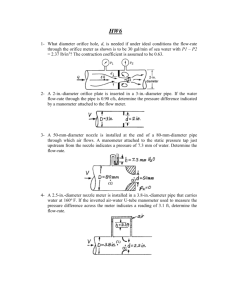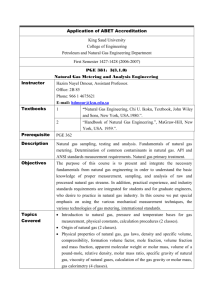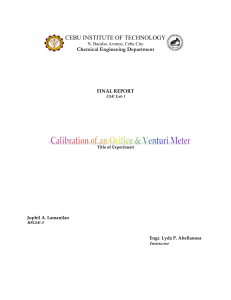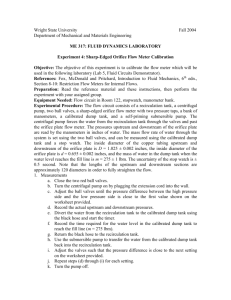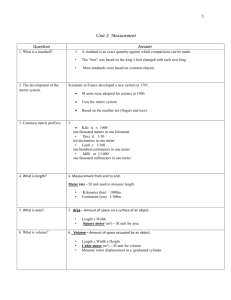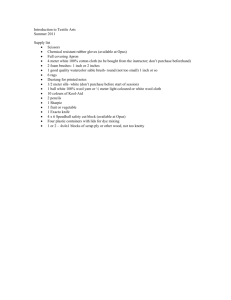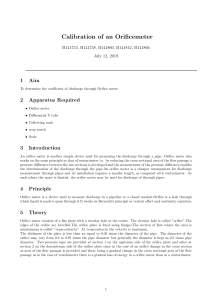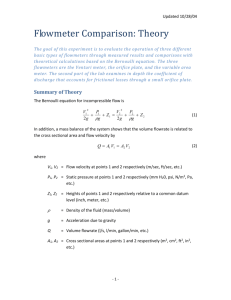Orifice meter
advertisement
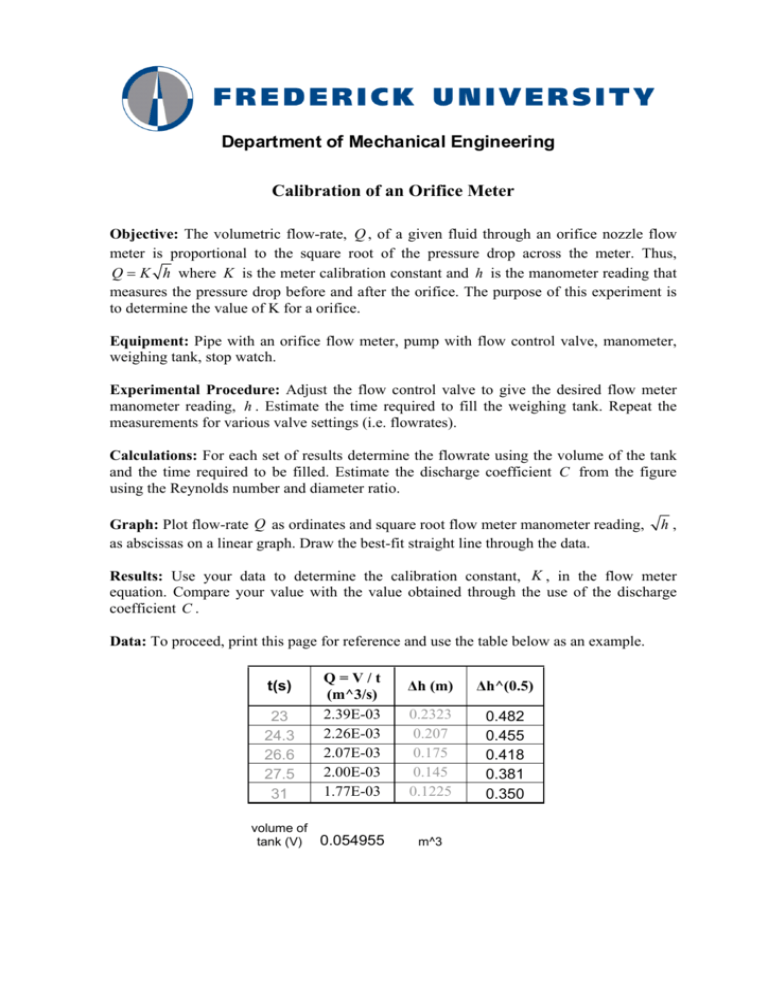
Department of Mechanical Engineering Calibration of an Orifice Meter Objective: The volumetric flow-rate, Q , of a given fluid through an orifice nozzle flow meter is proportional to the square root of the pressure drop across the meter. Thus, Q = K h where K is the meter calibration constant and h is the manometer reading that measures the pressure drop before and after the orifice. The purpose of this experiment is to determine the value of K for a orifice. Equipment: Pipe with an orifice flow meter, pump with flow control valve, manometer, weighing tank, stop watch. Experimental Procedure: Adjust the flow control valve to give the desired flow meter manometer reading, h . Estimate the time required to fill the weighing tank. Repeat the measurements for various valve settings (i.e. flowrates). Calculations: For each set of results determine the flowrate using the volume of the tank and the time required to be filled. Estimate the discharge coefficient C from the figure using the Reynolds number and diameter ratio. Graph: Plot flow-rate Q as ordinates and square root flow meter manometer reading, as abscissas on a linear graph. Draw the best-fit straight line through the data. h, Results: Use your data to determine the calibration constant, K , in the flow meter equation. Compare your value with the value obtained through the use of the discharge coefficient C . Data: To proceed, print this page for reference and use the table below as an example. t(s) 23 24.3 26.6 27.5 31 Q=V/t (m^3/s) 2.39E-03 2.26E-03 2.07E-03 2.00E-03 1.77E-03 volume of tank (V) 0.054955 ∆h (m) ∆h^(0.5) 0.2323 0.207 0.175 0.145 0.1225 0.482 0.455 0.418 0.381 0.350 m^3 THEORY: The orifice flow meter consists of a contraction as shown the diagram. Writing Bernoulli’s equation between section 1 and 2 we have: p1 V12 p V2 + + z1 = 2 + 2 + z2 + hL , ρ g 2g ρ g 2g V is the velocity (m/s) , P is the pressure (Pa) , z is the velocity (m) and where hL head loss (m/s) . If the meter is horizontal z1 and z2 cancel. Also from continuity V1 A1 = V2 A2 , where A1 and A2 are the areas. Solving for V2 we have: V2 = 2 ( p1 − p2 − ρ ghL ) ( ρ 1 − ( A2 / A1 ) 2 ) . The value of hL must be determined experimentally. But it is more convenient to modify the equation by dropping hL and introducing a discharge coefficient C . Hence the volumetric flow rate Q is given by: Q = CA2 ( 2 ( p1 − p2 ) ρ 1 − ( A2 / A1 ) 2 ) The pressure difference ( p1 − p2 ) is measured using a mercury manometer: ∴ Q = CA2 2 g ∆h( ρ Hg − ρ H 2O ) ( ρ H O 1 − ( A2 / A1 ) 2 2 ) Hence, in general, the volumetric flow rate is proportional to the square root of the manometer reading. The discgarge coefficient (C) can be obtained from the following figure. In this figure d is the diameter of the throat section and D the diameter of the inlet (section 1).
